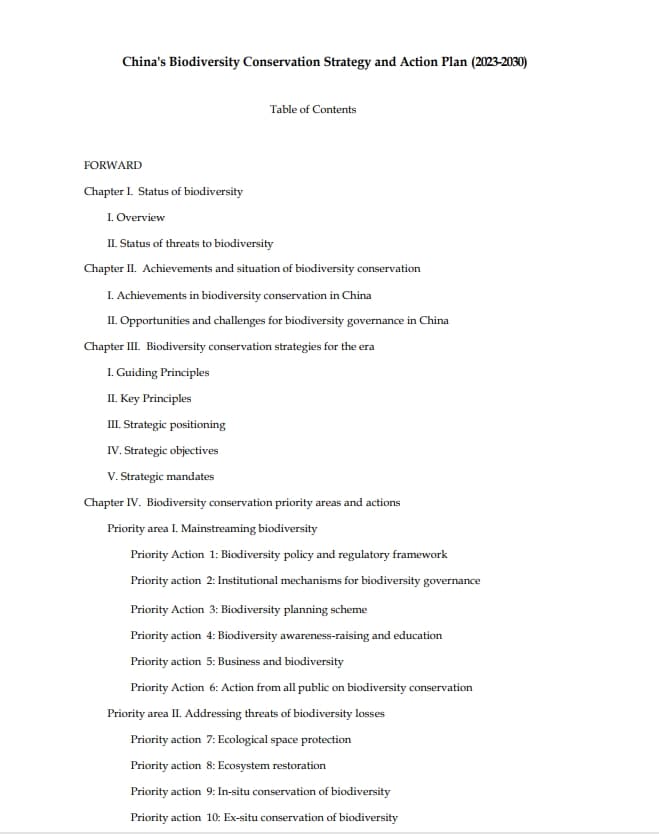Biodiversity enlivens the Earth and is the basis for human survival and development, as well as the lifeline and foundation of the Earth’s living community. However, affected by the loss and destruction of natural habitats, over-utilization of natural resources, environmental pollution, invasion of alien species and climate change, the rate of species extinction has been accelerating, and the function of ecosystem services has declined markedly, posing a serious threat to the survival of humankind and to sustainable development.
In 2022, fifteenth Conference of the Parties to the Convention on Biological Diversity (COP15) Phase II resulted in the Kunming-Montreal Global Biodiversity Framework, which sets out a new blueprint for global biodiversity governance in the coming period to realize the 2050 vision of a world where human beings live in harmony with nature.
Urgent action must be taken before 2030 to halt and reverse the trend of biodiversity loss and put nature on the road to recovery. As President of COP15, China has played an important leading role in promoting the conclusion of the Kunming-Montreal Global Biodiversity Framework, and accelerating the implementation of the relevant outcomes in China will further demonstrate its role as a responsible big country.
China is rich in biodiversity. The Chinese government has firmly established and practiced the concept that lucid waters and lush mountains are invaluable assets, adhering to respect for nature, conformity to nature and protection of nature, actively promoting the construction of an ecological civilization and the protection of biodiversity, and releasing and implementing China’s Biodiversity Conservation Strategy and Action Plan.
China has also established a coordination mechanism under the State Council to strengthen biodiversity conservation, continuously promoted the mainstreaming of biodiversity, innovated the implementation of the ecological protection red line system, set up a nature reserve system with national parks as the mainstay, delineated 35 priority areas for biodiversity conservation, carried out major projects for biodiversity conservation, and stepped up law enforcement and supervision. As a result, a large number of rare and endangered species have been effectively protected, and the diversity, stability and sustainability of ecosystems have been continuously enhanced, leading to a road of biodiversity conservation with Chinese characteristics, and making important contributions to global biodiversity governance.
In 2021, the General Office of the Central Committee of the Communist Party of China and the General Office of the State Council issued the Opinions on Further Strengthening Biodiversity Conservation, which clarified the new objectives and tasks for further strengthening biodiversity conservation in the new period and provided guidelines for various departments and regions to carry out biodiversity conservation work.
In 2022, the Chinese Government proposed that Chinese modernization is a modernization of harmonious coexistence between human beings and nature, and made the promotion of harmonious coexistence between human beings and nature one of the qualitative requirements for Chinese-style modernization, making a major plan for the construction of an ecological civilization and the protection of biodiversity, and providing guidance for the promotion of the construction of an ecological civilization and the protection of biodiversity in a new era.
In order to actively promote the implementation of the Opinions on Further Strengthening Biodiversity Conservation and the implementation of the Kunming-Montreal Global Biodiversity Framework, effectively respond to the challenges faced by biodiversity, comprehensively improve the level of biodiversity governance, and effectively support the construction of a beautiful China and the modernization of harmonious coexistence between human beings and nature, the Ministry of Ecology and Environment, in cooperation with the relevant departments, has compiled the “China’s Biodiversity Conservation Strategy and Action Plan (2023-2030)”, which clarifies China’s new-era biodiversity conservation strategy, priority areas and priority actions, and provides guidance for various departments and regions to promote biodiversity conservation.

